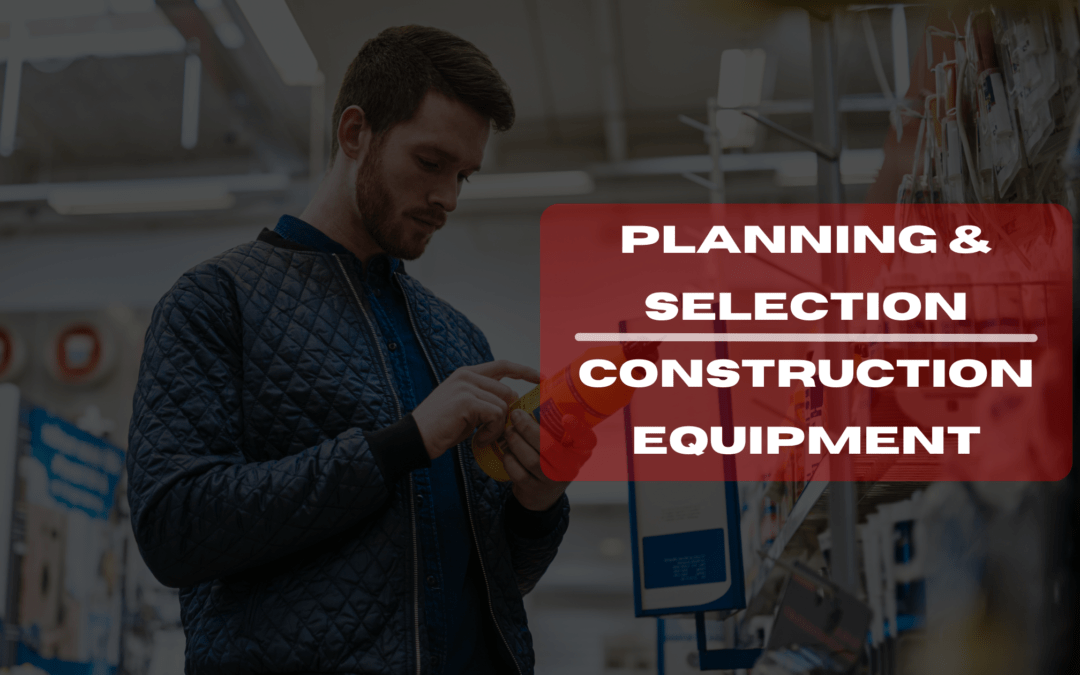Factors Influencing the Planning and Selection of Construction Equipment
In the world of construction, the construction equipment selection can make or break a project. It’s like selecting the right tools for an intricate job; precision matters. The planning and selection of construction equipment is a complex task that involves numerous considerations. In this article, we will unravel the various factors that influence this decision-making process.
Table of Contents
The Critical Role of Construction Equipment
Before we dive into the factors influencing equipment selection, it’s important to understand the significance of construction equipment in any project. Construction equipment is the muscle behind the vision. From bulldozers reshaping landscapes to cranes hoisting materials to great heights, these machines are the heartbeat of construction.
“Good fortune is what happens when opportunity meets with planning.” – Thomas Edison
Factors Influencing Equipment Selection
1. Project Scope and Requirements
The foundation of equipment selection is understanding the project’s unique demands:
- Project Size: The scale of the project, whether it’s a small-scale residential construction or a massive infrastructure endeavor, determines the types and sizes of equipment needed.
- Complexity: Complex projects may require specialized equipment or attachments to tackle unique challenges.
- Duration: The project timeline influences the choice between buying, leasing, or renting equipment.
2. Budget Constraints
Financial considerations play a pivotal role:
- Capital vs. Operational Costs: Balancing the initial acquisition cost with ongoing operational and maintenance expenses is essential.
- Financing Options: Exploring financing options such as equipment leasing can help manage upfront costs.
3. Equipment Availability and Lead Time
Equipment availability and lead time are crucial:
- Market Availability: The region’s equipment market availability can impact selection.
- Lead Time: Some specialized equipment may have longer lead times for procurement, which must align with project schedules.
4. Operational Efficiency and Productivity
Efficiency is key to project success:
- Fuel Efficiency: Fuel consumption impacts operational costs and environmental considerations.
- Productivity Features: Considering equipment features that enhance productivity, such as automation or advanced technology.
5. Equipment Performance and Specifications
Understanding equipment capabilities and specifications is vital:
- Equipment Type: Choosing the right type of equipment for the task, whether it’s earthmoving, material handling, or specialized machinery.
- Capacity and Power: Ensuring the equipment can handle the required loads and tasks efficiently.
6. Maintenance and Serviceability
Maintenance requirements and serviceability are essential for long-term cost management:
- Maintenance Needs: Assessing the maintenance needs and availability of service providers.
- Spare Parts Availability: Evaluating the availability and cost of spare parts.
7. Environmental and Regulatory Compliance
Meeting environmental and regulatory standards is non-negotiable:
- Emissions: Considering emissions standards and environmental impact when selecting equipment.
- Safety Features: Ensuring equipment complies with safety regulations to protect workers.
8. Site Conditions and Accessibility
Site-specific conditions influence equipment selection:
- Terrain: Evaluating the type of terrain and ground conditions where the equipment will operate.
- Accessibility: Assessing how easily equipment can access and maneuver within the construction site.
9. Resale Value and Depreciation
The long-term financial implications of equipment ownership:
- Resale Value: Assessing the potential resale value of equipment at the end of its useful life.
- Depreciation: Considering the rate of depreciation and its impact on the project’s financials.
10. Project Timeline and Deadlines
Meeting project milestones and deadlines is critical:
- Equipment Delivery: Ensuring that equipment delivery aligns with project schedules.
- Backup Plans: Having contingency plans in place for equipment breakdowns or delays.
11. Safety and Risk Management
Prioritizing safety to minimize risks:
- Safety Records: Evaluating the safety records and history of equipment models and manufacturers.
- Risk Assessment: Performing risk assessments to identify potential hazards associated with equipment use.
12. Operator Skill and Training
The skill level of equipment operators is crucial:
- Operator Training: Ensuring that operators are trained and certified to operate specific equipment safely and efficiently.
13. Technology Integration
Technology is increasingly integrated into construction equipment:
- Telematics: Exploring equipment with telematics systems for real-time monitoring and data collection.
- Automation: Considering equipment with automation features for improved accuracy and efficiency.
14. Supplier and Manufacturer Reputation
The reputation of suppliers and manufacturers matters:
- Reliability: Choosing reputable suppliers known for reliable equipment.
- Support: Ensuring the supplier offers adequate support and warranty options.
Conclusion
In the realm of construction, the planning and selection of equipment is akin to assembling a well-orchestrated symphony. Each factor, from project requirements to budget constraints and environmental considerations, plays a unique role in this orchestration. A well-thought-out equipment selection process is a testament to project success, where the right equipment, used efficiently, can turn construction dreams into reality.
Understanding and navigating these influencing factors is essential for both budding construction professionals and seasoned experts in the field. In the end, it’s the harmonious interplay of these factors that ensures that construction projects rise, quite literally, to new heights.
Remember, it’s not just equipment; it’s a carefully calculated choice that brings construction visions to life.

